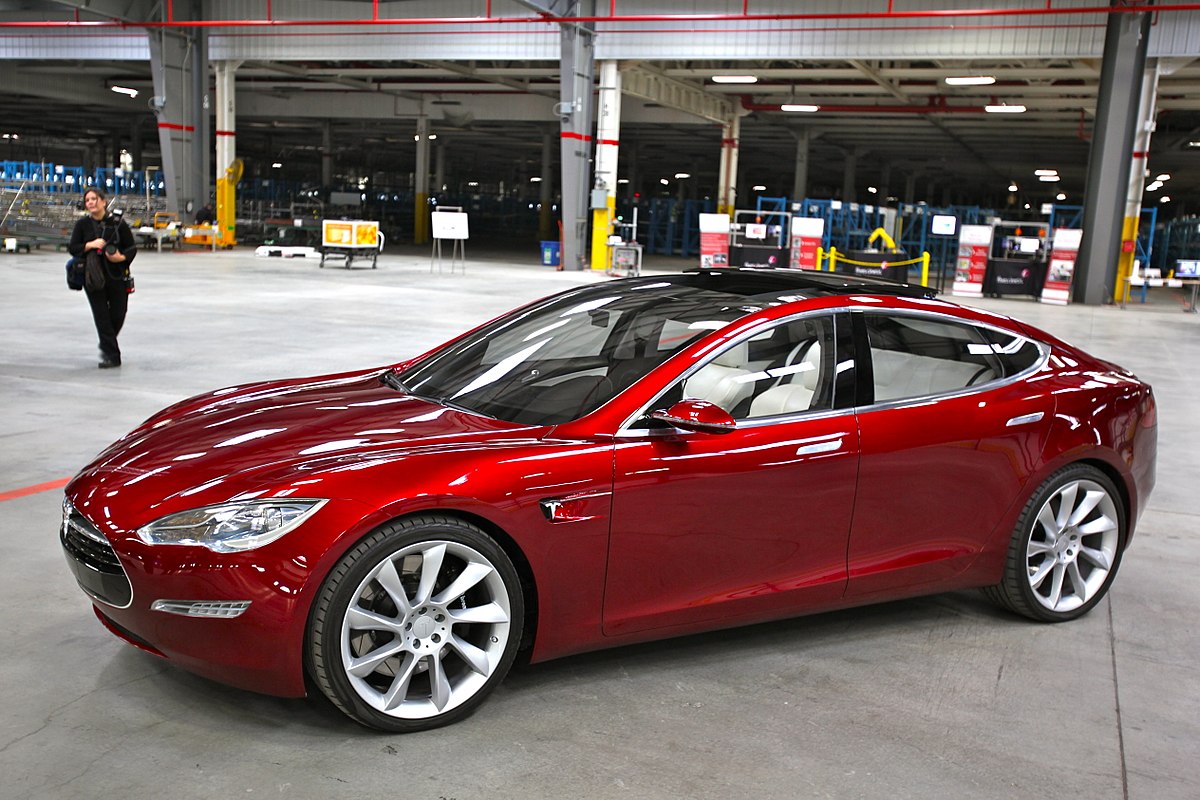Três aspirações para Veículos Elétricos de longa distância
IDTechEx
Cambridge, Reino Unido
Agora destaca-se a corrida para fazer carros regulares e premium com uma autonomia maior. Isso ocorre porque a maioria das pessoas quer ter apenas um carro, então ele deve ser capaz de viagens de longa distância, mesmo que isto custe mais. Isso deve ser alcançado, apesar da inadequação de questões em número, velocidade e compatibilidade de interface e meios de pagamento.
A abordagem incremental
Os carros elétricos puramente tradicionais, tipicamente, agora têm uma autonomia de 300-400 quilômetros (185-250 milhas). Um veículo premium como a aeronave elétrica Sun Flyer ou a Tesla S alcançam cerca de 560 km, embora isso seja geralmente alcançado quase duplicando o custo e o tamanho da bateria, atrasando a paridade do preço de compra com os veículos com motores de combustão interna, o que ainda é um golpe quase fatal no segmento. Melhor performance é alcançada por condução anormal não praticável em condições regulares do mundo real.
A nova abordagem química
A próxima promessa, em carros esportivos, é o Nanoflowcell com uma bateria de células de fluxo e um alcance de 500-1000 km, com condução regular. A Toyota está trabalhando em um carro elétrico alimentado por uma bateria de estado sólido, que aumenta significativamente a autonomia e reduz o tempo de carregamento em minutos, com o objetivo de começar as vendas em 2022. O alcance pode ser superior a 600 km, mas nenhum protótipo oficial foi anunciado. As baterias de estado sólido usam eletrólitos sólidos em vez de líquidos, tornando-os mais seguros do que as baterias de íon de lítio atualmente no mercado.
A abordagem de independência energética
Os veículos elétricos independentes de energia (EIV) nunca precisam transportar combustível ou encontrar um carregador. O progresso em relação a eles é visto no avião Sun Flyer, com superfícies solares aumentando a a autonomia em 30% e uma hélice inversa usando o vento para carregar a bateria ao subir, descer e quando estacionada em um aeródromo exposta ao vento. Há uma bicicleta solar que viaja com luz do sol sem bateria ou a necessidade de pedalar.
A conquista da independência energética total é vista com muitos barcos elétricos solares , alguns com velas. Outros barcos fabricam toda a sua energia elétrica a partir de turbinas eólicas ou uma combinação desta com a energia fotovoltaica. Alguns fabricantes citam uma velocidade “perpétua” que pode ser apenas alguns nós para um veículo subaquático autônomo “planador” que se adapta para carregar suas baterias de ondas e sol .
Raghu Das, CEO dos analistas IDTechEx, está organizando a primeira conferência mundial sobre “Veículos Elétricos Independentes da Energia” na Universidade Técnica de Delft de 27 a 28 de setembro.
Ele diz: “Esta é uma ideia cujo tempo chegou, com os veículos rodoviários com uma energia fotovoltaica econômica de 40% acessível no futuro” . “A seguir, haverá um protagonismo das indústrias automotiva, aeroespacial e marítima com independência energética, ignorando mesmo as concessionárias de eletricidade e as estações de carga e reduzindo a importância das baterias. Durante o período inicial de produtos de nicho e vendas limitadas, as empresas experientes estarão melhorando e adotando essas tecnologias para avançar na indústria nos próximos anos. Lembre-se de como a indústria riu do Toyota Prius, em seguida, em Tesla. Agora eles riem dos carros Sion e Hanergy porque esses ou outros proponentes vão chocar a indústria novamente. É melhor acompanhar o assunto e estar pronto para liderar a mudança. ”
Por Dr. Peter Harrop, Presidente, IDTechEx
Fonte: Charlotte Hibbert – Marketing & Research Co-ordinator – [email protected], em 22/09/2017.
Tradução e edição: Henrique Cortez, em 26/09/2017.
Texto original:
Friday 22 September 2017
Three Aspirations for Long Distance EVs
IDTechEx
Cambridge, UK
Three Aspirations for Long Distance EVs
By Dr Peter Harrop, Chairman, IDTechEx
All the publicity currently goes to the race to make regular and premium cars have longer range. This is because most people want only one car so it must be capable of the long distance trip however rare. That must be achieved despite the inadequacy of charging points in number, speed and compatibilty of interface and payment means.
The incremental approach
Mainstream pure electric cars typically now have a doubled range of 300-400 kilometers (185-250 miles). A premium vehicle such as the Sun Flyer pure electric aircraft or Tesla S gets around 560 km though this is all usually achieved by nearly doubling the battery cost and size, therefore delaying purchase price parity with internal combustion engined vehicles – the killer blow. Better is achieved by abnormal driving not practicable in regular real world conditions. For instance, Elon Musk recently sent a tweet to congratulate the owners of a Tesla S who had achieved 1000 km.
The new chemistry approach
Next we are promised Nanoflowcell sports cars with a flow cell battery and 500-1000 km range in regular driving. Toyota is working on an electric car powered by a solid-state battery that significantly increases driving range and reduces charging time to minutes, aiming to begin sales in 2022. Range may be over 600 km but no official figure has been announced. Solid-state batteries use solid electrolytes rather than liquid ones, making them safer than lithium-ion batteries currently on the market – even non-flammable.
The energy independence approach
Energy Independent Electric Vehicles (EIV) never need to carry fuel or find a charger. Progress towards them is seen in the Sun Flyer type of aircraft with solar surfaces increasing range 30% and a reversing propeller using wind to charge the battery when soaring, descending and when parked on a windy airfield. There is a solar bike that travels in sunshine without battery or pedalling.
Achievement of total energy independence is seen with many Naval DC solar electric boats, some having sails. Other boats make all their electric power from wind turbines or a combination of this with photovoltaics. Some manufacturers quote “perpetual” speed which may be only a few knots for a “glider” autonomous underwater vehicle that surfaces to charge its batteries from waves and sun or seven knots for a surface boat.
Raghu Das, CEO of analysts IDTechEx, is organising the world’s first conference on “Energy Independent Electric Vehicles” at the Technical University of Delft September 27-28.
He says, “This is an idea whose time has come, with road vehicles having affordable 40% efficient photovoltaics in future that expands when parking, at which time super-efficient wind turbines erect. The many on- and off- road vehicles that are only used in daylight may need no battery. Toyota is keynote speaker and a dazzling array of new enabling technologies will be presented from electricity-generating tires and windows to sails and airship fabric making electricity from rain, wind and sun. Ultra-lightweighting including structural electronics and electrics is covered.”
Elon Musk usurped the traditional motor industry with his Tesla becoming the “Apple of automotive” based entirely on gorgeous pure electric cars using one fifth of the parts.
Das advises, “Next will come disruption of automotive, aerospace and marine industries with energy independence bypassing even electricity utilities and charging stations and reducing the importance of batteries. During the initial period of niche products and limited sales, savvy companies will be improving and adopting these technologies to leapfrog the industry in the years to come. Remember how the industry laughed at the Toyota Prius then at Tesla. They now laugh at the Sion and Hanergy solar street legal cars at their peril because these or other proponents are going to shock the industry again. Better to keep up with the subject and be ready to lead the change.”
About IDTechEx
IDTechEx guides your strategic business decisions through its Research and Events services, helping you profit from emerging technologies. We provide independent research, business intelligence and advice to companies across the value chain based on research activities and methodologies which provide data sought by business leaders, strategists and technology scouts to aid their critical business decisions. To discuss your needs please contact us at [email protected] or see www.IDTechEx.com.
Contact:
Charlotte Hibbert
Event Manager
UK: +44-(0)1223-810286










